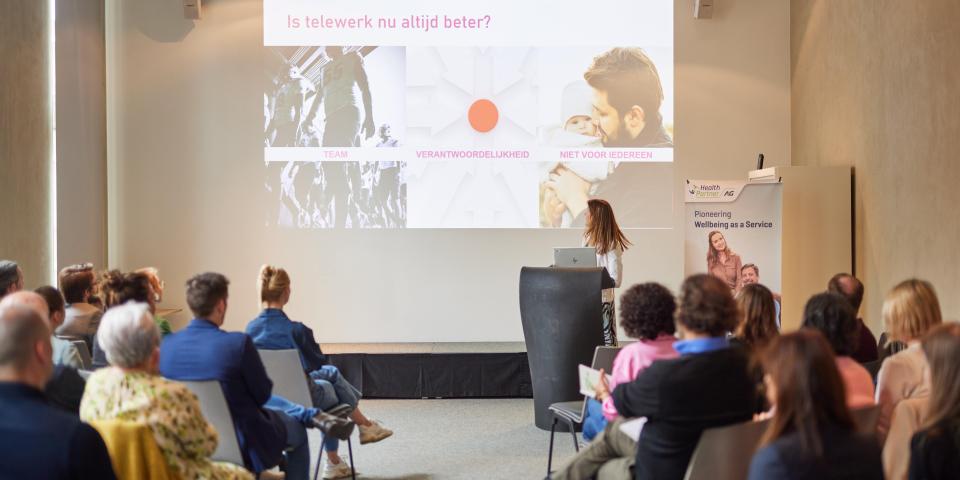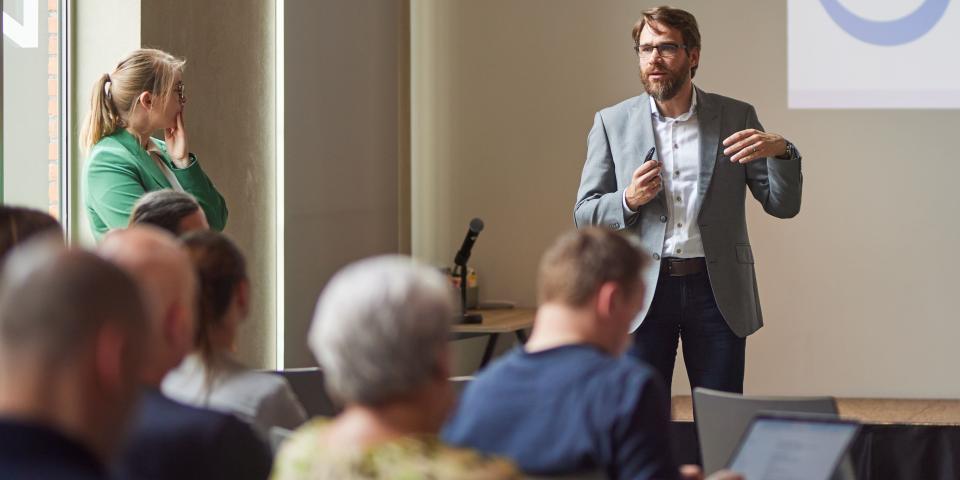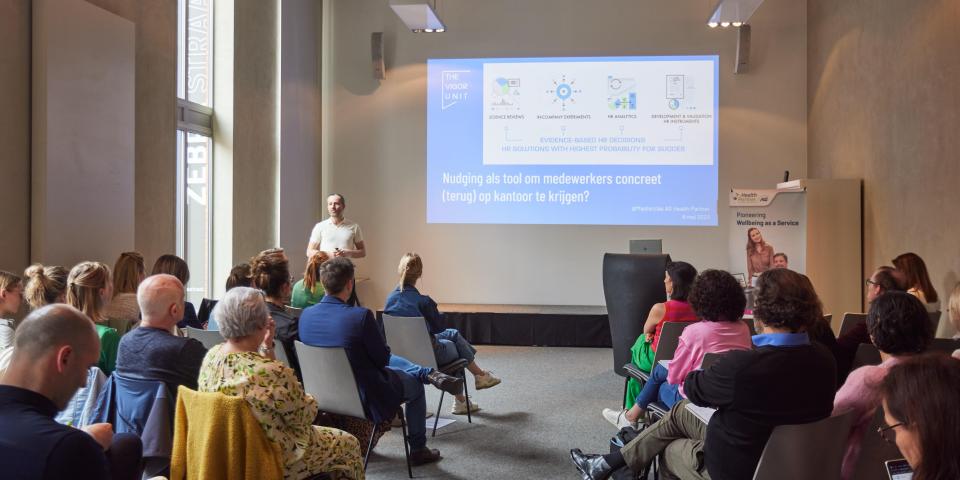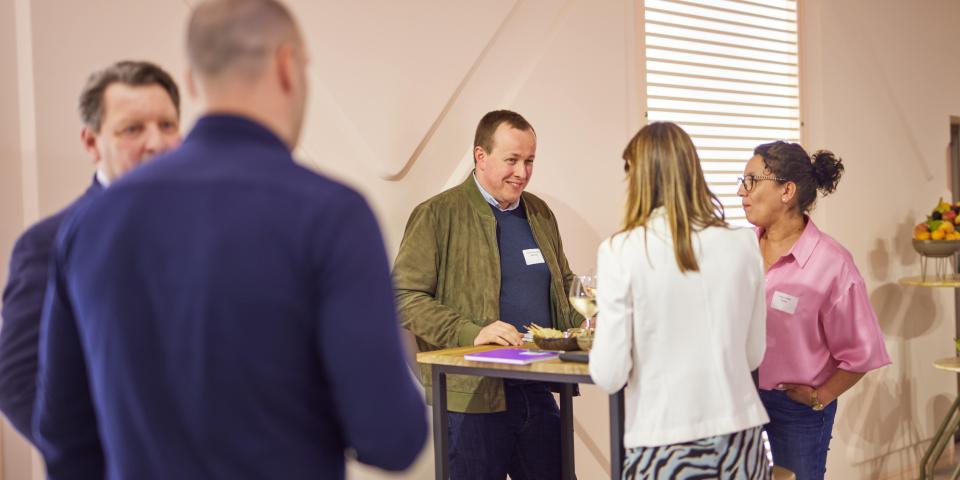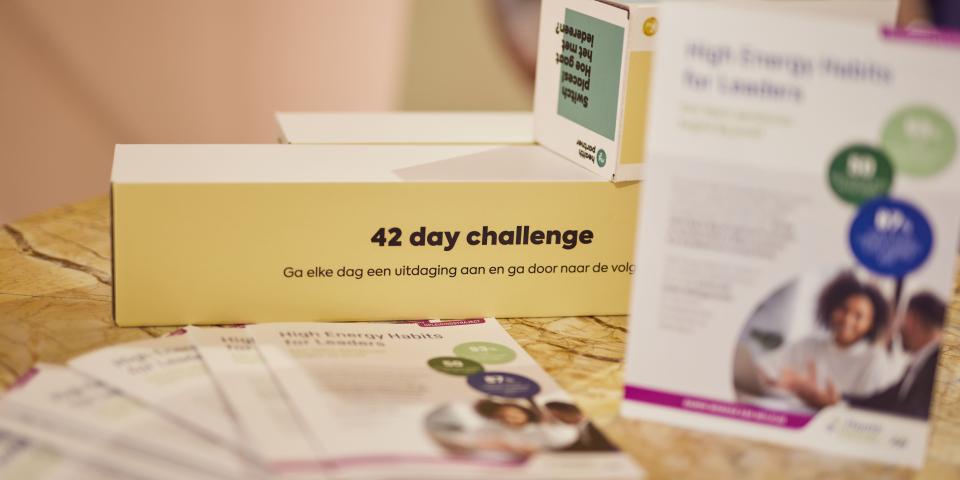The Great Return: how to get your workers back to the office?
[Masterclass]
How to create engagement and connection when your team works part-time in the office and part-time from home? Should you force reticent colleagues to return to the office? Which positive incentives can employers use? These were just a few of the questions that were raised during the Master Class on “The Great Return”. Curious about the key takeways of this very informative day? We have summarised them for you!
Employees enjoy working from home because of flexible working hours and the shorter commute. While employers have been quick to embrace remote working, many have also imposed restrictions. Interestingly only 7% of employees have expressed a desire to return to the office full-time. And although employers and employees alike believe that remote working does not affect productivity, scientific research and several practical examples have demonstrated the importance of working in an office. The only problem is that you also need to convince employees that being in an office can be fun.
#1 A minimum number of anchor days is not recommended
Cédric Velghe, a researcher and the CEO of The VIGOR Unit, is often asked by organisations whether they should enforce mandated days in the office? He investigated this issue, conducting a meta-analysis of academic literature, and presented his findings.
“Although remote working or working from home are not directly related to an employee’s performance, they can, however, have a detrimental influence on communication, knowledge sharing, and relationships with colleagues”, he said. “To limit the consequences in terms of productivity, employees should work in the office more often. Unfortunately, the current office environment is often the problem.” Anchor days in the office? Not a good idea. Cédric did suggest a few measures, such as redesigning the office environment. Managers should also consult with their teams to determine for which events they need to be physically in the office.
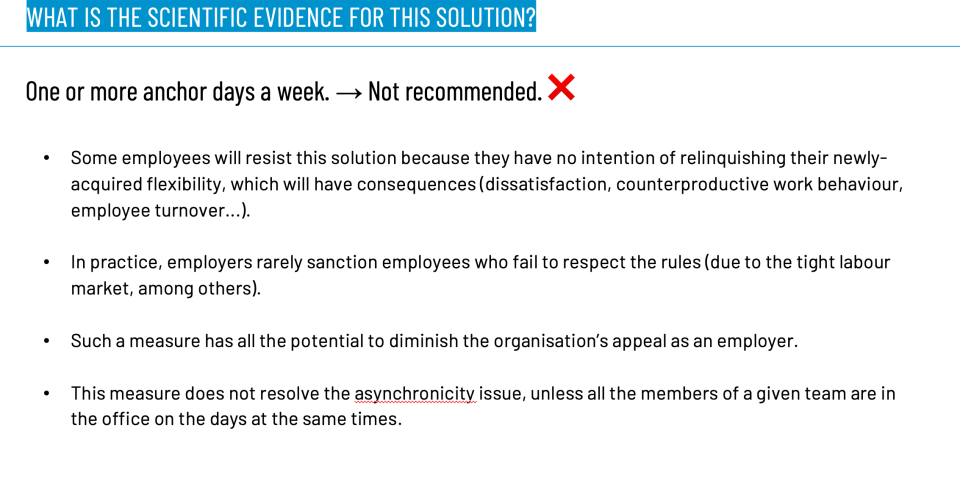
Nudging is much more effective than anchor days – Cédric Velghe, Managing Partner The VIGOR Unit
Nudging can be especially effective to promote working in the office, Cédric explained. He demonstrated three types of nudges, on different levels:
- Decision information: to give employees a better insight into their work pattern, employers should consider issuing monthly reports with feedback on how they compare to their colleagues and where there is margin for growth.
- Decision structure: change the option-related effort. Distance from the office is a good example of this. Open a satellite office for a shorter commute, and facilitate parcel delivery at work to make daily life easier.
- Decision assistance: you can make planning office work easier to promote engagement. Encourage employees to indicate which days they are where in a team charter and in their calendars. And add a visual function to highlight who is in the office, at home, or working on location.
#2 The added value of being in the office must be highlighted
Highlighting the added value of being in the office plays an important part in nudging. Liesa Molenaers, Learning & Development Partner at AG, showed how AG’s HR Department guided the organisation and way of working into a new direction post-pandemic. “AG’s goal? To become a great place to grow for all. Instead of launching a new way of working, we opted for a smarter way of working”, she revealed.
This process was enshrined in a charter, founded on three behavioural principles which help employees to get more satisfaction out of their (office) job. A number of guidelines were defined and rolled out for each principle:
- Collaborate smart: use the right tool for each action, spend time on meetings and share your calendar and work locations with your co-workers.
- Take care: (Dis)connect when necessary, don’t be afraid to express yourself, and make self-care part of your work routine.
- Stay focused: define your priorities, manage your agenda, and strike the right balance between synchronous and asynchronous activities.
Managers can help to get all the employees on board with the new way of working - Liesa Molenaers, L&D Partner AG
“We rolled out different initiatives for each principle”, Liesa explained. “We decided to apply the principle of “lead by example” to maximise support and ensure the initiative is a long-term success. Managers can help to get all the employees on board with the new way of working. This led to the formulation of a fourth behavioural principle: our connection as a team, with a written explanation of what this involves.”
#3 People managers can leverage connection, provided there is sufficient communication
Liesa’s story shows how leaders can make all the difference. Fostering connection is everything, as Leila Minten, whealthy manager and team coach at Springbok Coaching explained. “That sense of belonging and feeling that connection is incredibly important to our well-being. But it also requires sufficient communication, something that people sometimes tend to forget. It means listening actively, without judgement, offering emotional safety, by showing that you are trustworthy, being attentive, and paying attention to your body language while you do this.”
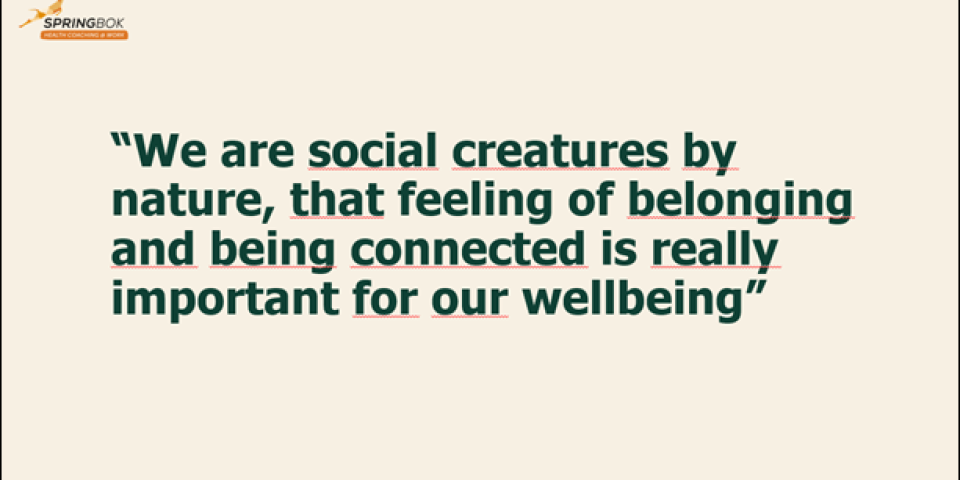
The case of Zorg Vilvoorde also demonstrated the importance of communication. Lode Peeters (General Manager) and Sofie Bruyninckx (staff member responsible for organisational development) shared their experiences with the impact of people managers on the connection between employees.
“We wanted to get employees back in the office and make sure that they were enthusiastic about this prospect”, Sofie explained. “We did this by focussing on the ABC of employee needs: autonomy, bond (relatedness) and competence, based on Deci & Ryan’s self-determination theory. The people managers - our managers - were our primary target group as they are the key to a successful wellbeing policy. “They always create a safe environment of trust, see the person behind the employee, are not afraid of being vulnerable, stimulate team development and individual talents, and show appreciation.”
We actively involved our people managers in the shaping of our wellbeing policy – Lode Peeters, General Director Zorg Vilvoorde
When drawing up and implementing policy objectives, Zorg Vilvoorde involved them in the process, organising monthly sessions on communication and engagement in day-to-day operations. They also worked with multidisciplinary teams and projects on innovative work organisation. “Unfortunately, the pandemic threw a spanner in the works, jeopardising the wellbeing of employees, which in turn increased absenteeism”, Lode explained. “That is why we started by organising workshops on resilience for employees and managers. The next step was to roll out a holistic coaching and wellbeing project for our people managers: the High Energy Habits for Leaders programme. During this six-month programme, our managers concentrated on strengthening their leadership capacities based on their energy level. Finally, we also broadened our wellbeing policy, to include a new Employee Value Proposition, namely “Everyone welcome”.
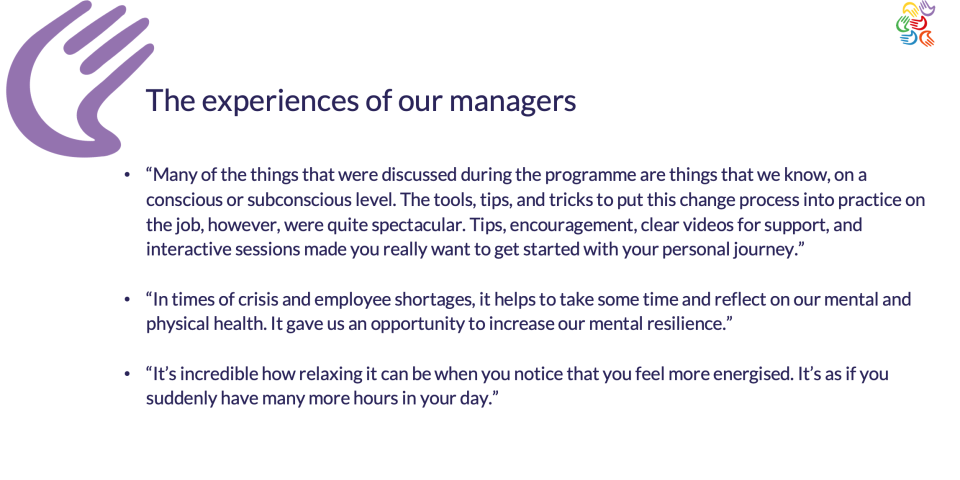
The science and the case studies were unanimous: to get employees to return to the office wholeheartedly, you need to establish a policy that encompassed much more than being in the office. It requires you to put your employees first. You also need to support them by creating a working environment in which they can look back on their work day with satisfaction. What should you include in such a policy? Flexible working hours, remote working, ergonomic workstations, and a good work-life balance. That way your employees will be happy to return to the office!
Missed our first Masterclass?
